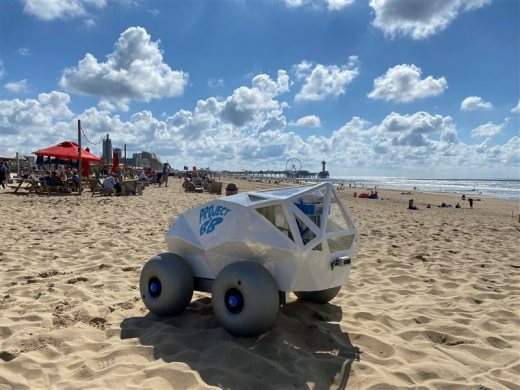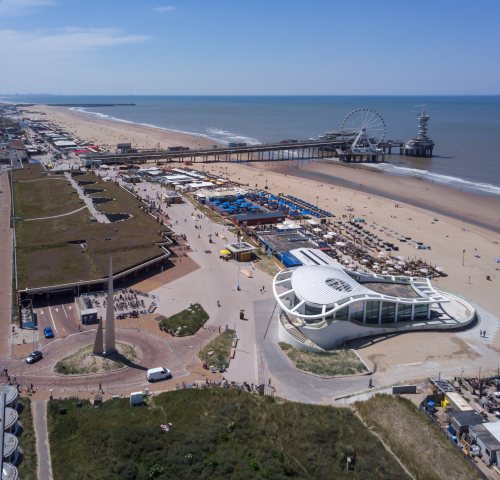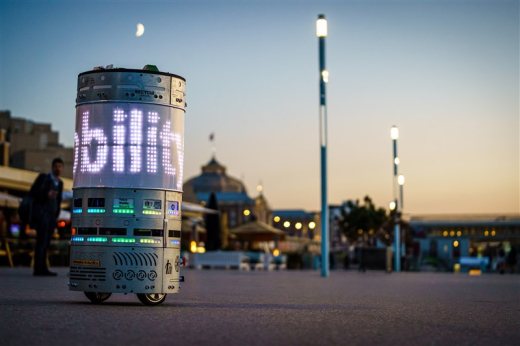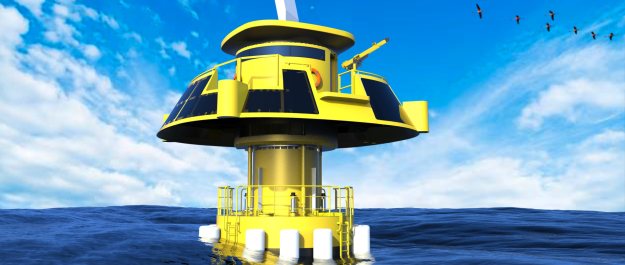The municipality of The Hague and grid operator Stedin are developing a smart electricity grid of the future on the coast of The Hague, Scheveningen. It involves an autonomous electricity grid that can self-regulate. The smart beach grid in Scheveningen will be a complete low-voltage network on a small scale, equipped with solar panels, heat pumps and charging stations, as well as various beach pavilions, the beach volleyball stadium, and other major event venues. Through the deployment of a big beach battery, the benefits of solar energy can now be harnessed even when the sun isn’t shining.
The new beach battery has a capacity of 360kWh and can power a beach pavilion for two days. Moreover, the battery is constructed from recycled batteries sourced from electric vehicles. During sunny afternoons when there is surplus solar energy, the generated electricity is stored and utilized later when there is a high demand. This approach helps avoid peak periods for the grid. It optimises electricity distribution by enabling Stedin to efficiently manage peaks in energy demand and supply. It also empowers users such as beach pavilions and festivals by granting them greater control over their energy consumption. For instance, they can specify preferences such as maintaining a certain temperature range using the cheapest method or scheduling electric vehicle charging during the most sustainable hours.
“With the Smart Beach Grid, we are exploring the blueprint for the electricity grid of the future. The beach battery enables even smarter energy management, addressing significant challenges posed by the energy transition in cities like The Hague. Initiatives like this contribute to making Scheveningen a more sustainable place.”
After a two-year trial period, Stedin plans to scale up the concept. Initially implemented in Scheveningen alone, the aim is to extend this model to other low-voltage networks across the country. Together, these initiatives promise a significant impact on establishing a sustainable and affordable energy supply for the Netherlands.
“As a grid operator, Stedin faces the challenge of increasing congestion on the electricity grid. Innovation is key to addressing this challenge. This battery exemplifies a smart solution to optimize grid capacity utilization. Testing such technologies on a small scale in Scheveningen is crucial for Stedin. Hence, the collaboration between Stedin and the municipality of The Hague.”
Living Lab Scheveningen
The development of the Smart Beach Grid takes place within the Living Lab Scheveningen, a testbed and learning area along the Scheveningen boulevard. This initiative serves as a platform for practical testing of digital innovations contributing to urban challenges. Already, the event area at the Beach Stadium and the control center of Scheveningen harbor are connected to the Smart Beach Grid. This year, three beach pavilions will also start supplying and consuming energy from the beach grid.
The beach of Scheveningen is used for LivingLab Scheveningen to test SmartCity innovations like:
1. Autonomous Grid Control: software orchestrates the flow of electricity, optimizing energy distribution and ensuring reliability.
2. Renewable Energy Integration: Solar panels adorn rooftops, harnessing sunlight to power nearby facilities, reducing reliance on traditional grid sources.
3. Dynamic Charging Stations: Electric vehicle charging points adapt to demand, maximizing efficiency and supporting the transition to sustainable transportation.
4. Smart Lighting Systems: Energy-efficient LED lights illuminate the boulevard, equipped with sensors to adjust brightness based on foot traffic and weather conditions. Like De Wave
5. Data-driven Waste Management: Sensor-equipped bins optimise waste collection schedules, reducing litter and enhancing cleanliness along the coastline.
6. Interactive Information Kiosks: Touchscreen displays provide real-time updates on weather forecasts, local events, and sustainable living tips, fostering community engagement.








